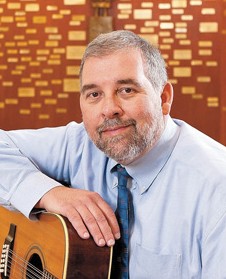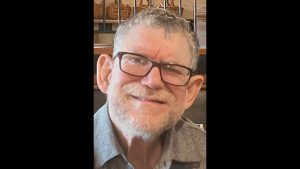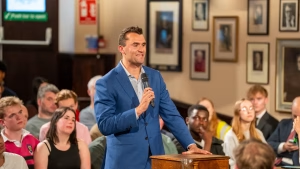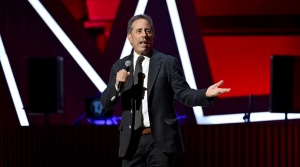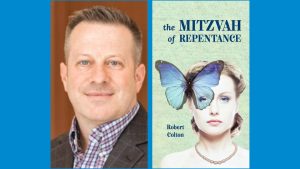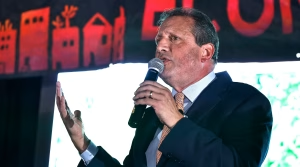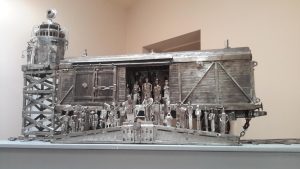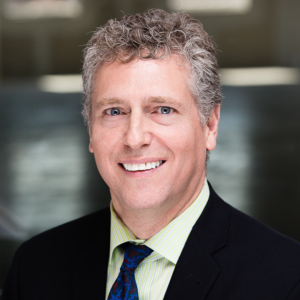Finding their calling as rabbis
Published October 12, 2010
Career choices have swelled exponentially since the days when nursery rhymes listed such options as “Rich man, poor man, beggar man, thief. Doctor, lawyer, Indian chief.” But even today, how many kids grow up determined to become a rabbi?
Not many, at least according to an admittedly small local sampling. Case in point: Shmuel Greenwald.
He not only didn’t celebrate a bar mitzvah as a teen, but as the third and youngest offspring of non-affiliated, non-practicing Jewish parents in Southern California’s San Fernando Valley, “I don’t think as a child I was ever in a synagogue for the High Holidays.”
ADVERTISEMENT
When his best friend transferred to a Jewish high school, the future Orthodox rabbi, now director of education at Aish HaTorah of Greater St. Louis, thought his friend was “meshugganah.”
Still, they kept in touch. After college in San Francisco, where Greenwald majored in finance and accounting and planned to earn a master’s in business, he visited his friend, by then resettled in Israel. There, sparks figuratively flew.
For the first time, Greenwald engaged in in-depth conversations with rabbis who offered well-reasoned explanations for their beliefs and practices. “That intrigued me,” he recalls.
Rabbinical training and eight years of study in Israel exposed him to “powerful ideas” and also brought him a wife (a former New Yorker)and the birth of the first two of their five children. Two of his goals as a rabbi became sharing what he learned and reaching out to others. “I felt I had an understanding of why some people aren’t interested in Judaism,” he says. “I know what’s bothering them because it bothered me. I know their questions because I had those same questions myself.”
ADVERTISEMENT
While his parents were less than thrilled by his career choice, he confides, they eventually accepted his decision. As to the likelihood of his ending up in St. Louis – “If you’d asked me as a child where I put St. Louis on the list of possible places I might live, it was probably somewhere between the Congo and United Arab Emirates,” he laughs.
The aisle to the pulpit for Rabbi James M. Bennett, senior rabbi at Congregation Shaare Emeth, a Reform temple, was likewise circuitous, though he made up his mind at a somewhat earlier age. The son of a physician who then went into academic medicine, he was forever relocating with his family, due to his father’s succession of jobs. Born in Boston, the future Rabbi Bennett called home to such locales as Ft. Worth, Texas, and Indianapolis, as well as Kansas City and Kirksville, Mo.
In Kansas City, the Bennetts drove 45 minutes each way to temple, where his mother taught religious school, sang in the temple choir and made sure her children participated in youth group. “I grew up with a very strong Jewish identity. My parents were extremely devoted and involved Reform Jews,” he says.
In high school, he excelled in math, physics and quantum science, solidifying his desire to follow his father into a science-oriented career. Nonetheless, other seeds had already been planted. When his family relocated to Indianapolis the summer before his senior year of high school, arguably one of the most traumatic times to uproot a teen, Rabbi Bennett sought friendships by joining another Reform Jewish youth group.
And upon learning he earlier worked at a Boy Scout camp in the Ozarks, his Indianapolis rabbi, Jonathan A. Stein, persuaded him to meet Rabbi Ron Klotz, then fledgling director of Union Camp Institute. The Indiana facility, now known as Goldman Camp Institute, or Camp GUCI, became Rabbi Bennett’s home away from home for eight summers, as he filled practically every position from counselor to assistant director. Rabbi Klotz subsequently became “one of my very closest friends in the world.”
Discovering the second week of college, his freshman year, that math and science no longer motivated or inspired him, he dropped his existing courses and signed up for such subjects as Jewish studies, philosophy, literature, sociology and psychology. His sophomore year, he decided that becoming a rabbi would “allow me to do all the things I loved most.” That realization was significantly nurtured, he says, by Rabbi Stein.
Rabbi Miller’s father’s wish for another doctor in the family was fulfilled when Rabbi Bennett’s older sister became a physician. But interestingly, his father often told him that given the chance to choose a career anew, he might have considered the rabbinate.
Had anyone told French-born Séverine Haziza-Sokol she would someday be a Reform rabbi at Kol Am congregation in Chesterfield, she would have been a disbeliever on all counts. In her hometown of Lyon, France, Reform Judaism is a relatively recent presence, she says.
Her first exposure to Reform Judaism came in England, where she traveled as a teenager on an exchange program. In college, as part of her English studies, she went to England to serve as a French teaching assistant. In England, she also met her first woman rabbi, Dr. Margaret Jacobi, of the Birmingham Progressive Synagogue. Coincidentally, Rabbi Dr. Jacobi studied medicine at Washington University here, before embarking on a rabbinic career. She inspired Séverine to enter the rabbinate.
When she was ordained at the Leo Baeck College of the United Kingdom in 2003, Rabbi Haziza-Sokol became one of only two French women to successfully seek ordination in London; two more have followed. Rabbi Haziza-Sokol is also the first French Sephardic woman to become a rabbi, a phenomenon unheard of for the Jews who settled in France from the Maghreb, or northwestern Africa.
Spurred by the rising tides of anti-Semitism, the rabbi’s mother was a grown woman when she immigrated to France from Morocco with her family. “Their Judaism was strictly traditional,” the rabbi says.
The rabbi’s father’s Sephardic family was part of what she describes as the principally secularized Jewish society in France that thrived and sputtered before World War II. Separated when the Germans entered Lyon, with some Hazizas fleeing to Algeria, the family was not reunited until after the war. “I grew up, like many Jews in France, in the shadow of the Holocaust,” she says.
Which makes all the more thought provoking the reply the rabbi’s 5-year-old daughter, Mazal, gave when asked what she would like to be when she grows up. “A rabbi,” she said. Her mother then told her that boys could be rabbis, too.
As a child, the future Rabbi Mordecai Miller already knew that lesson. But as the son of the founding rabbi of the first Reform Jewish temple in Durban, South Africa, he never contemplated serving a Conservative congregation.
Several factors proved pivotal. During his childhood in Durban, his mother read him “Bible Tales for Very Young Children,” written by Lenore Cohen and first published in the 1930s. Later, he devoured his sister’s comic-book version of the Bible.
For his bar mitzvah, he received both an English version of the Bible and a copy of Charles Dickens’ “A Tale of Two Cities.” Though completing the latter seemed daunting, he discovered that by reading a chapter a day, he eventually finished. About age 14 or 15, he applied the same logic to the Bible, finding five chapters a day to be manageable.
“I didn’t understand a ton of what I was reading, other than the narrative. But I felt that something was making an impression,” he says. So when he finished some 21/2 years later, he started again. In addition, Rabbi Miller’s mother was a Sabra. When he was a small child, she took the family to visit her native Israel. Staying with relatives, he so immersed himself in the sounds of Hebrew that he briefly forgot his English. That early background in Hebrew was “a real gift,” he says, helping him understand Hebrew prayers as a teenager.
At Hebrew Union College (HUC) in Cincinnati, where Reform rabbis train, he studied medieval Biblical commentary, which was written in Hebrew. “I couldn’t believe how interesting and original these commentaries were,” he says. He found himself equally enamored with a directive by an HUC teacher that in order to understand the Reform prayer book, students needed to spend a month attending morning minyan at an Orthodox congregation. “I loved it, probably because it was different,” says Rabbi Miller, who was among the few HUC students then keeping kosher.
Graduation from HUC was a shocker, of sorts. While it had never occurred to him to be anything other than a Reform rabbi, Reform temples found him “too observant and too traditional,” he says.
Thanks to a Reform/Conservative reciprocity agreement then in force, he was hired by a Conservative congregation in St. Paul, Minn. Then, in another all’s-well-that-ends-well twist to his story, nearly 20 years ago he joined the staff of Brith Sholom Kneseth Israel in Richmond Heights.
So what nursery rhymes might today’s kids be chanting? Perhaps: “Architect, software engineer, rabbi, straight-as-an-arrow financier.”



